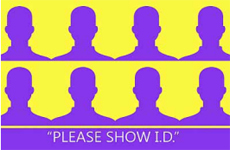
artigos e ensaios - 2011/ Mariza Peirano
Your ID, please?
The Henry Louis Gates vs. James Crowley event from an anthropological perspective.
In the modern world, ID papers are those indispensable objects without which we cannot prove we are who we say we are. We need material proof to attest to our identification since we cannot demonstrate in words and beyond doubt that we are this or that particular person. Our word and our image are not enough. In the world we live in, these small objects, issued by official bureaux, that we carry in our pockets or in our bags – in general of plastic material (or kept inside small plastic folders), as in the case of driver's licence or credit cards, or as small booklets, such as passports, in old or new versions of IDs (with biometric data, for instance) – are like modern amulets that open doors, and in their absence, close them.
Identity, notion of the person, concepts of the individual, body techniques – all are anthropology's archetypal themes. But, while the subject of IDs has its theoretical foundation in those classical topics, in this paper I am interested, not in developing an abstract conceptual discussion, but in the concrete mechanisms by which the processes that result in some kind of "identification" come to term. When trying to examine contemporary events, I am especially interested in the distinction among the various forms that we use to classify and single out people around us. For this reason, instead of looking at identity as a sociological phenomenon, my field of investigation privileges questions of classification.
The central ethnographic event of this paper took place in July 2009 with the arrest of Professor Henry Louis Gates, Jr., a well-known – albeit controversial – Harvard scholar of African-American studies, by the police of the city of Cambridge, Massachusetts, after a 911 call from a passer-by who reported that someone was breaking of the entrance door of a house in the center of the city. It soon transpired that it was the professor himself trying to get into his own house. After looking closely at this event, I go on to examine the difference between "recognition" and "identification" as proposed by Groebner (2007) to explain that identity papers and descriptions of a person may not be the same. These two modes clarify many aspects of our case, but I will in time add a third mode; that of social profiling. Following this first attempt at analysis, I present a report from a multiethnic committee, produced by the City of Cambridge and made available a year after the incident, in which both characters, the professor and the policeman who arrested him, are considered at fault in terms of responsibility concerning public safety. I end the paper by inviting Charles Peirce to help in discussing the implicit logic surrounding the singling out of a person by means of official IDs side by side with other less authorized forms. The expansion of the modern ideal of identification by means of official papers and other modern devices to include the persistence of "older" means of identification is, I hope, the principal contribution of this paper. Leia na íntegra...
